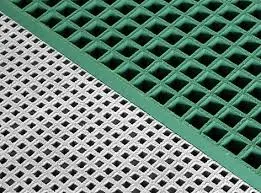
-
 Afrikaans
Afrikaans -
 Albanian
Albanian -
 Amharic
Amharic -
 Arabic
Arabic -
 Armenian
Armenian -
 Azerbaijani
Azerbaijani -
 Basque
Basque -
 Belarusian
Belarusian -
 Bengali
Bengali -
 Bosnian
Bosnian -
 Bulgarian
Bulgarian -
 Catalan
Catalan -
 Cebuano
Cebuano -
 China
China -
 China (Taiwan)
China (Taiwan) -
 Corsican
Corsican -
 Croatian
Croatian -
 Czech
Czech -
 Danish
Danish -
 Dutch
Dutch -
 English
English -
 Esperanto
Esperanto -
 Estonian
Estonian -
 Finnish
Finnish -
 French
French -
 Frisian
Frisian -
 Galician
Galician -
 Georgian
Georgian -
 German
German -
 Greek
Greek -
 Gujarati
Gujarati -
 Haitian Creole
Haitian Creole -
 hausa
hausa -
 hawaiian
hawaiian -
 Hebrew
Hebrew -
 Hindi
Hindi -
 Miao
Miao -
 Hungarian
Hungarian -
 Icelandic
Icelandic -
 igbo
igbo -
 Indonesian
Indonesian -
 irish
irish -
 Italian
Italian -
 Japanese
Japanese -
 Javanese
Javanese -
 Kannada
Kannada -
 kazakh
kazakh -
 Khmer
Khmer -
 Rwandese
Rwandese -
 Korean
Korean -
 Kurdish
Kurdish -
 Kyrgyz
Kyrgyz -
 Lao
Lao -
 Latin
Latin -
 Latvian
Latvian -
 Lithuanian
Lithuanian -
 Luxembourgish
Luxembourgish -
 Macedonian
Macedonian -
 Malgashi
Malgashi -
 Malay
Malay -
 Malayalam
Malayalam -
 Maltese
Maltese -
 Maori
Maori -
 Marathi
Marathi -
 Mongolian
Mongolian -
 Myanmar
Myanmar -
 Nepali
Nepali -
 Norwegian
Norwegian -
 Norwegian
Norwegian -
 Occitan
Occitan -
 Pashto
Pashto -
 Persian
Persian -
 Polish
Polish -
 Portuguese
Portuguese -
 Punjabi
Punjabi -
 Romanian
Romanian -
 Russian
Russian -
 Samoan
Samoan -
 Scottish Gaelic
Scottish Gaelic -
 Serbian
Serbian -
 Sesotho
Sesotho -
 Shona
Shona -
 Sindhi
Sindhi -
 Sinhala
Sinhala -
 Slovak
Slovak -
 Slovenian
Slovenian -
 Somali
Somali -
 Spanish
Spanish -
 Sundanese
Sundanese -
 Swahili
Swahili -
 Swedish
Swedish -
 Tagalog
Tagalog -
 Tajik
Tajik -
 Tamil
Tamil -
 Tatar
Tatar -
 Telugu
Telugu -
 Thai
Thai -
 Turkish
Turkish -
 Turkmen
Turkmen -
 Ukrainian
Ukrainian -
 Urdu
Urdu -
 Uighur
Uighur -
 Uzbek
Uzbek -
 Vietnamese
Vietnamese -
 Welsh
Welsh -
 Bantu
Bantu -
 Yiddish
Yiddish -
 Yoruba
Yoruba -
 Zulu
Zulu
grp water tank
Understanding GRP Water Tanks Benefits and Applications
In recent years, the demand for efficient and environmentally friendly water storage solutions has surged across various industries and communities. One of the increasingly popular options is the GRP (Glass Reinforced Plastic) water tank, which offers numerous advantages over traditional storage systems. This article delves into the features, benefits, and applications of GRP water tanks, highlighting why they are becoming a preferred choice for water storage.
GRP is a composite material made from a polymer matrix reinforced with glass fibers. The combination of these materials results in a product that is lightweight yet incredibly strong. GRP water tanks are engineered to withstand pressures and impacts, making them suitable for an array of uses, from domestic water storage to large-scale industrial applications.
One of the primary benefits of GRP water tanks is their corrosion resistance. Unlike metal tanks that are prone to rust, GRP tanks do not corrode, ensuring a longer lifespan and lower maintenance costs. This characteristic is particularly advantageous in regions with harsh environmental conditions or in applications where the water quality might be compromised by rust and corrosion.
Understanding GRP Water Tanks Benefits and Applications
GRP tanks are also highly customizable. They can be manufactured in various sizes and shapes to meet specific storage requirements. This flexibility allows for tailored solutions that accommodate different applications, whether for residential, commercial, or industrial usage. The modular design of GRP tanks enables them to be expanded or reconfigured as necessary, providing scalable solutions for growing water storage needs.
grp water tank

In terms of insulation properties, GRP tanks are superior to many other materials. They can maintain water temperature by minimizing heat transfer, which is crucial for retaining water quality, especially in warmer climates. The insulation capabilities of GRP tanks help prevent the growth of algae and bacteria, ensuring that the stored water remains clean and safe for use.
Moreover, GRP tanks comply with health and safety regulations, as they can be manufactured with food-grade resin, making them suitable for potable water storage. Their non-toxic properties ensure that no harmful substances leach into the water, providing peace of mind for users.
The applications of GRP water tanks are vast. In the residential sector, they are perfect for storing rainwater or holding water for household use. In commercial settings, they are widely utilized for fire protection systems, irrigation, and cooling systems. Additionally, industries such as agriculture, food processing, and manufacturing benefit from the efficiency and reliability of GRP tanks in their operations.
Sustainability is a growing concern worldwide, and GRP tanks contribute positively to this initiative. Their long service life and low maintenance requirements mean that fewer resources are consumed over time compared to traditional water storage solutions. Furthermore, innovative manufacturing processes are often employed to reduce environmental impact during the production of GRP tanks.
In summary, GRP water tanks represent a modern solution to water storage needs, combining strength, durability, and versatility. Their corrosion resistance, lightweight nature, affordability, and customizability make them an appealing choice across various sectors. As industries increasingly prioritize sustainability and efficiency, the adoption of GRP water tanks is likely to continue rising. For anyone considering a reliable and long-lasting water storage option, GRP water tanks are undoubtedly worth exploring. With their myriad of benefits, they not only meet present demands but also contribute to a sustainable future.
In conclusion, as global water demand continues to increase, investing in efficient and environmentally friendly storage solutions like GRP tanks will become ever more critical. The clear advantages they offer position GRP tanks as a leading contender in water storage technology, supporting both current needs and future objectives effectively.









